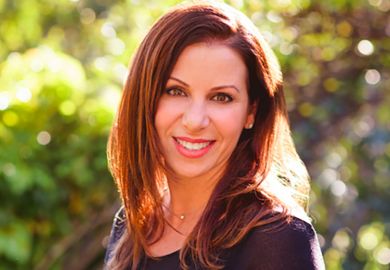What sorts of books inspired you as a child?
Much of my reading was fairly prosaic – the likes of Laura Ingalls Wilder and the Bobbsey Twins. Brighter spots were Hans Christian Andersen’s Fairy Tales and a scrubbed version of Grimms’ Fairy Tales. Years later, as a linguist studying the Grimms’ work on the German language, I felt a real homecoming.
What spurred you to focus your attention on reading as a topic for research?
I came to focus on reading through an interest in written language. Well-behaved linguists knew that our object of study was exclusively speech – writing was a mere representation of language. But I rebelled, thanks to a chance encounter with a facsimile of a Mixtec manuscript, the Codex Zouche-Nuttall. Much like Mayan glyphs, the symbols in this historical narrative (dated c.1200-1500AD) looked like cartoon pictures. However, decipherment revealed that they actually were writing and represented sounds. From there, I became fascinated with the origins of writing, different writing systems and writing technologies.
Can you suggest a few books that explore the power of reading – and what is lost when we rely on digital media?
Two landmarks are Maryanne Wolf’s Proust and the Squid: The Story and Science of the Reading Brain and, more recently, Reader, Come Home: The Reading Brain in a Digital World. Wolf is passionate about the transformative power of reading in our lives. The recent tilt to digital worries her that deep reading will suffer. Writing in a wholly different context in The End of Your Life Book Club, Will Schwalbe reminds us that while digital books “live out of sight and out of mind”, printed books “have body, presence”. The physicality of print offers an anchor for memory and a tactile canvas for aesthetic enjoyment.
What sources can help us predict the likely future of publishing?
My go-to tea leaves in the US are statistics from the Association of American Publishers. After dramatic growth in the early 2010s, e-book sales began dropping each year, with print largely holding its own. The pandemic jacked up e-book sales, but print survived. My biggest concern is the widening gulf between trade and academic. Even before learning went virtual, publishers were driving higher education to digital adoption, arguing for a price advantage. Meanwhile, university press sales continued to decline. My crystal ball warns that while trade will retain a reasonable print footprint, students will increasingly be herded on-screen.
What is the last book you gave as a gift, and to whom?
A photographic book on the Northern Lights, sent to a dear friend who teaches Hindi and Sanskrit. I’m about to travel to Iceland. Although the season is wrong for seeing the aurora borealis, I hoped she could enjoy it vicariously for us both.
What books do you have on your desk waiting to be read?
Two books especially beckon: Kazuo Ishiguro’s Klara and the Sun and Minae Mizumura’s An I-Novel. During the pandemic, I mixed my serious reading with never-ending Nordic crime fiction. Now I’m eager to return full throttle to elegant, thought-provoking literature.
Naomi S. Baron is professor emerita of linguistics at American University in Washington DC. Her latest book is How We Read Now: Strategic Choices for Print, Screen, and Audio (Oxford University Press).
POSTSCRIPT:
Print headline: Shelf life: Naomi S. Baron
Register to continue
Why register?
- Registration is free and only takes a moment
- Once registered, you can read 3 articles a month
- Sign up for our newsletter
Subscribe
Or subscribe for unlimited access to:
- Unlimited access to news, views, insights & reviews
- Digital editions
- Digital access to THE’s university and college rankings analysis
Already registered or a current subscriber?








